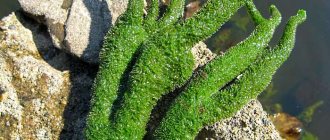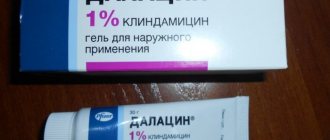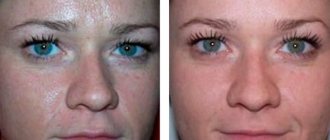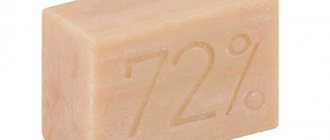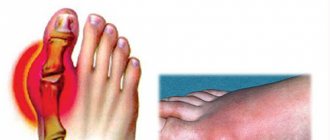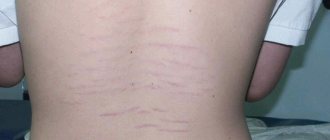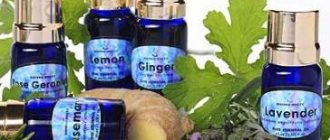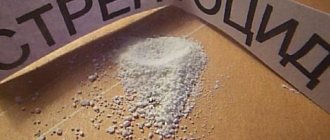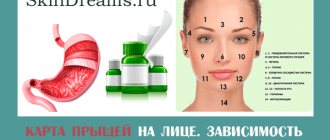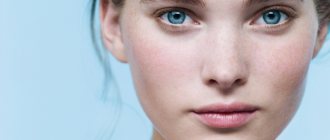A little about acne and pimples
It’s worth clarifying right away that acne is a completely normal phenomenon, especially during adolescence or during times of strong hormonal activity. During such periods of life, this reaction of the body is quite normal, and you just need to wait for the hormonal levels to normalize for the skin to return to normal.
But if acne does not disappear even with the onset of adulthood, termination of pregnancy, treatment with hormonal drugs or menstruation, you should start to worry. After all, this may indicate serious disturbances in the functioning of the body, an extremely incorrect diet or lifestyle in general.
But it is quite difficult to independently determine the cause of acne, since there are many factors that we simply do not want to take into account. For example, on our website a whole section , but even after studying it we cannot speak with confidence about the reasons. And even more so, we cannot prescribe the correct course of treatment for ourselves.
There are a lot of ways, and not all of them work. That is why it is worth first going to a specialist who understands the issue.
The only problem is that a person suffering from acne on his face does not always know which specialist can help him. Which doctor should I go to with acne - a cosmetologist or a dermatologist? Unclear. After all, at first glance, it seems that these specialists are doing the same thing - helping people with problem skin.
Treatment of acne on the face
Getting rid of acne is a rather long process. Treatment should begin after determining the causes of the rash.
The following drugs are used in medical practice:
- Retinoids. They are creams and ointments containing vitamin A. These drugs relieve inflammation well and have an antiseptic and healing effect.
- Antiseptics. Medicines that have the ability to disinfect the surface of the dermis. These drugs include cindol, differin, and metrogil.
- Antibiotics. Preparations based on tetracycline, erythromycin. Used in cases of bacterial origin of rashes.
- Hormonal ointments. Helps normalize the secretion of sebaceous and sweat glands. The use of these drugs must be strictly as prescribed by the doctor.
Which doctor should you go to for acne: a cosmetologist or a dermatologist?
First, let's answer the most common question: cosmetologist or dermatologist - what is the difference? It exists, and it is very significant. The fact is that the cosmetologist’s task is to eliminate existing aesthetic defects on your skin without digging too deeply into the problem.
At the same time, a dermatologist is not called a doctor for nothing. This is a certified specialist with a medical education. When you come to see him with a specific problem or question, he goes over the issues of external skin care only superficially, determining what you are doing correctly and what is not.
What is the difference between a cosmetologist and a dermatologist?
That is, he can prescribe the most suitable skin care products for you and explain all the intricacies of daily procedures. In general, he will tell you and show you what to do to prevent pimples from appearing due to external factors, such as incorrectly selected cosmetics, poor care, or imbalanced skin.
This is a specialist with a real certificate, but still not a doctor. You should contact a cosmetologist if you want to maintain a pleasant skin appearance, choose good products for yourself and develop an ideal daily care routine. A dermatologist is a completely different matter.
His main job is to identify the underlying cause of acne on the skin. Find out why it did not disappear with the end of adolescence.
With the help of examinations and all the necessary tests, find out where exactly the body “fails.” After all, as we know, serious acne does not just appear because you ate one extra burger yesterday. The problem always lies much deeper.
For example, if you notice that acne begins to appear more intensely after eating junk food, then the doctor will send you for tests and an examination of the gastrointestinal tract. If the hormonal balance is disturbed, you will have to undergo gynecological examinations and take all the necessary smears.
Simply put, a dermatologist understands exactly how problems in the functioning of the body affect our skin and is able to help with it. He will be able to diagnose the possible causes of epidermal disease and provide their correct treatment, taking into account the individual characteristics of your body.
In addition, he will prescribe you a really good and effective acne medicine.
So cosmetologist or dermatologist?
If you are asked whether you are a cosmetologist or a dermatologist for acne, then you can say this. A cosmetologist will make you beautiful, and a dermatologist will cure you. Each of these specialists has their own specific work that helps to achieve solutions to your problems. They use different equipment, tools, drugs, for example, cosmetic or medical ones. However, the ultimate goal of both the cosmetologist and the dermatologist is common: to make your skin clear.
Traditional ways to get rid of rashes on the face and body
At home, you can relieve inflammation and dry out a pimple using the following methods:
- A mask made from fresh cucumbers perfectly relieves inflammation and irritation. To do this, grate the vegetable on a fine grater and apply the resulting porridge to the inflamed area for 5-10 minutes.
- You can also use yeast and lemon. To do this, mix 50 g of yeast with a tablespoon of fresh lemon juice and mix thoroughly. The product can be applied to the affected areas in the form of a mask for 15-20 minutes.
When do you need a cosmetologist for acne?
The most common practice of beauty salons is to serve clients with early stages of acne. If your disease shows the first symptoms or is in a mild stage, a cosmetologist will cope with it through medicinal cosmetics.
You may ask: what are these stages, and how can I tell if I have a mild one? We have already written about this in detail in this article , supplementing useful information with visual photos, so we recommend that you read it. But let’s explain briefly.
At what degree of acne can you contact a cosmetologist?
There are only 4 degrees of acne, and each of them is characterized by a special intensity and density of acne coverage of the skin. We are interested in the first 2 degrees, which are conventionally considered mild. At the first stage, in the oiliest areas of the skin (on the chin, forehead and wings of the nose), black dots and small pink pimples appear with suppuration inside.
So far, acne does not cause any discomfort, except for aesthetic reasons - acne does not hurt or itch. In the second stage, there are more acne. They are already spreading to other areas of the face and body.
Acne covers the cheeks, and sometimes the back, shoulders and chest. The appearance of pimples of a pale pink hue and medium size is typical. They are hidden under the skin, making it impossible to squeeze them out. These acne pains when pressed and itch before breaking out.
Most often, such problems occur in adolescents and young adults, because the pubertal and post-pubertal periods are the peak of the body’s hormonal activity, and this is the main cause of pimples and acne. If you notice signs of the first or second stage of acne, then you can go to a cosmetologist.
What to do if the cosmetologist does not help?
In this case, properly selected care and procedures can significantly improve the condition of the skin. However, if the work of a cosmetologist did not produce any results (or they simply did not completely satisfy you), but at the same time you are confident in the competence of the specialist, then it is worth visiting a dermatologist. After all, perhaps the main cause of your acne is internal problems of the body. And this is already serious.
How to avoid acne
The condition of the skin worsens significantly when rashes and acne appear. Acne treatment can be lengthy and does not always lead to a positive result.
Therefore, dermatologists recommend that people prone to skin problems follow preventive rules. After assessing your skin condition, your doctor can tell you how to prevent acne.
The set of measures includes lifestyle changes, hygienic and cosmetic care, and the use of folk remedies.
Hygiene procedures
You can avoid acne by following basic hygiene rules. Cleanliness is the main component of prevention.
You should wash your face with warm water twice a day. In this case, the pores open and impurities come out. During water procedures, hypoallergenic compounds or products for problem skin are used.
Among the effective drugs are:
- Dove;
- Neutrogena;
- Vichy;
- La Roche-Posay;
- Avène.
Hygiene procedures are an important component of prevention
Those with oily and dry skin need to choose a cleansing composition especially carefully. In the first case, it is important not to over-moisturize or dry out the skin. If your skin is sensitive, it is better to choose oil-based products.
Before washing, you must wash your hands thoroughly. It is also worth remembering that too aggressive actions can injure the skin and lead to acne.
Moisturizing the skin deserves special attention. After all, when washing, fats are removed, which can cause dehydration. To replenish the lack of moisture, a moisturizer is applied. It is important to choose it depending on the type of cover.
For those with oily skin, it is better to use gel products. They do not clog pores while restoring water balance. If the skin is dry, then use cream.
- It is necessary to exfoliate the top layer of skin weekly to remove dead cells and open pores. The procedures are carried out using:
- scrubs that have a physical effect;
- alpha hydroxy acids to remove dead cells;
- beta-hydroxy acids to cleanse pores.
It is important to wash off your makeup every day before going to bed. Leaving makeup on your face will clog your pores. In this case, acne occurs.
Lotions and tonics are used to cleanse pores.
It is worth remembering that no less attention should be paid to the selection of cosmetics. It is better to use foundations without oils in the composition, use powder to absorb excess fat.
During the day you should not touch your skin. After all, bacteria are easily transferred to its surface, causing rashes.
Personal hygiene items should be used by one person. It is forbidden to share a towel, makeup brushes, or sponges with someone.
Special attention is paid to hair care. If dirty hair rubs against the skin, acne appears. It is recommended to wash your hair at least once every two days. You should avoid excessive use of gels, mousses, and sprays.
Avoid skin exposure to ultraviolet rays. This can lead to tissue damage and worsening rashes. When exposed to the sun, it is necessary to use non-comedogenic protective compounds and wear hats.
Prevention of rashes on the face includes mandatory normalization of the drinking regime. It is important to drink plenty of fluids, which will help keep the skin clean. This is considered especially relevant when playing sports.
Smoking and alcohol are the main enemies of the skin and friends of acne
The occurrence of rashes is influenced by a person’s diet. You can cope with acne by including in your diet:
- vegetables;
- fruit;
- lean proteins;
- cereals;
- nuts;
- fatty acids.
Vitamin A, zinc, and Omega-3 fatty acids are considered especially beneficial for the body. The first removes toxins and waste from the body. Zinc fights against an environment unfavorable for the development of bacteria. Fatty acids normalize metabolism and eliminate the inflammatory process.
Do not squeeze pimples. As a result, the wound can become infected
It is necessary to refuse food that is harmful to the body. These are considered foods with a high glycemic index:
- chocolate;
- French fries;
- pizza;
- milk.
The latter contains a large amount of hormones that provoke the appearance of acne. There is no need to completely eliminate dairy products. But it is better to limit their consumption.
https://www.youtube.com/watch?v=pW9542vQPiY
Alcohol and smoking worsen skin condition. Getting rid of bad habits helps restore your appearance.
To reduce stressful situations, you need to get enough sleep. It is recommended to rest at least 7–8 hours per day. In this case, the body is completely restored.
To prevent acne, it is necessary to use certain cosmetic formulations. When used for preventive purposes, skin problems can be avoided.
We also recommend:Lotion for problem skin
- The fight against bacteria is carried out using benzoyl peroxide. The substance, used in different concentrations, helps eliminate dead skin cells.
- Harmful microorganisms can be eliminated by using formulations with salicylic acid. After exfoliation of cells, tissues are quickly renewed. The preparations are used on clean covers before bedtime.
- Tea tree oil has anti-inflammatory properties. After applying it to the skin, acne becomes less red and noticeable. It is necessary to dilute it with water and use it spot on. If procedures are performed frequently, skin irritation may occur.
If the rash worsens, you will definitely need the help of a dermatologist. He will assess the condition of the integument and prescribe a course of treatment.
Cosmetics selected according to skin type are used to cleanse the skin.
Folk remedies
You can use natural folk remedies at home. It is important to first check for the absence of an allergic reaction to natural components.
The effect on the body can be external and internal. In the first case, masks and tonics are used. For prevention, it is recommended to take cleansing infusions.
- A decoction of nettles (a tablespoon per glass of water) is considered beneficial. You need to drink 1/2 glass three times a day for a month.
- Yeast (7–10 g) is used on an empty stomach. It is also recommended to drink 200 ml twice a day of a decoction of sage, nettle and birch (pour a tablespoon of each herb into 600 ml of water).
- Masks and tonics are effective in combating and preventing rashes. A soda composition is used to cleanse and tighten pores. It is prepared by diluting baking soda with water until it turns into a paste. The mask is applied to the skin for 15 minutes, after which it is washed off with water.
- You can cleanse the skin with a chamomile composition (a teaspoon diluted with water). The mask must be kept on for several minutes, then rinsed off with water.
- A toner with apple cider vinegar (200 ml of water and a teaspoon of vinegar) is suitable for any skin type. You need to wipe your skin with lotion twice a day.
It is recommended to apply medicinal compositions based on folk recipes
Helpful Tips and Warnings
To avoid breakouts, you need to follow some important rules.
- It is not recommended to press your face against the pillow while sleeping.
- During the day, it is necessary to wash off sweat from the face to prevent rashes.
- Scrubs and peelings are used in the absence of rashes. It is important not to put pressure on the skin, acting gently and carefully.
- Do not squeeze pimples. In their place, scars and scars may remain.
If you follow simple rules, you can prevent the appearance of acne and pimples. Prevention is an important goal when fighting acne.
Source: https://postpk.ru/zdorovye/kak-izbezhat-poyavleniya-pryshchey
When is a dermatologist needed for acne?
This specialist already specializes in all degrees of acne, without exception. You should contact him if the cosmetologist’s procedures did not help, or you observe signs of a more severe form of acne. And now we will tell you how to determine that such signs really exist.
At what stage of acne should you go to a dermatologist?
The third and fourth stages are the most severe - they are difficult to treat and cause a lot of discomfort to their carrier. At the third stage, acne affects all areas of the face, without exception. It becomes more intense - it is observed that several pimples merge into painful dark pink spots filled with liquid pus.
This type of acne is also called conglobate acne. Inflammatory processes on the skin do not stop, and acne hurts and itches. And the final stage will be the fourth, at which surgical intervention is often resorted to.
At the last stage, the acne practically merges into one whole. There is practically no living space left on the affected skin - in areas with such acne, the skin causes severe pain and itching. In fact, during this period, acne becomes similar to multiple boils. A ripe pimple breaks out literally with light pressure.
Symptoms
Since skin changes are not always associated with local processes, to determine the cause of acne you will have to undergo a comprehensive examination. The first stage will be a medical examination, on the basis of which a preliminary diagnosis is made. The specialist interviews the patient and identifies objective signs of pathology present in him.
Comedones
Comedones are considered a type of acne. These are small papules that occur when skin pores are blocked by fatty deposits and horny masses. Closed comedones are white, while open comedones are black. The former, unlike the latter, are often subject to inflammation with the further formation of nodes and pustules.
When pressed, thick contents are released from the comedones. They are localized in places rich in sebaceous glands. On the face these are the nose, forehead, chin and cheeks. In addition, similar dry pimples are detected on the back, but sebaceous plugs there, of course, are not so noticeable.
Neurodermatitis
People with an allergic predisposition often develop atopic dermatitis or neurodermatitis. This is a chronic disease that is characterized by the appearance of papular rashes accompanied by intense itching. They appear on unchanged skin or cover slightly hyperemic areas.
Against the background of dry skin, due to hyperkeratosis processes, scales and cracks appear, and the natural pattern (lichenification) intensifies. The rash can be localized on any part of the body, but most often the face, neck, and large folds are affected. Papules can merge with each other, forming continuous infiltrative foci.
In addition to dermatological changes, neurodermatitis is also characterized by systemic disorders. They are mainly neurotic in nature:
- Sleep disturbance.
- Emotional lability.
- Irritability.
There are also vasomotor disorders. At the local level, they are represented by white dermographism, but often there is even a decrease in blood pressure caused by autonomic dysregulation.
Dry skin with acne occurs with neurodermatitis, when the rash is accompanied by intense itching.
Follicular hyperkeratosis
With follicular hyperkeratosis, the stratum corneum of the epidermis thickens, causing small pimples to appear against the background of rough and rough skin. The nodules are located at the base of the hair follicles and are surrounded by a red rim. Mostly, such pimples are localized on the arms and thighs, forming a picture of “goose bumps”.
The generalized form of the disease is accompanied by extensive damage to the trunk and limbs. The skin of the face is sometimes also involved in the pathological process - then the rash has to be distinguished from acne. With hyperkeratosis, unlike acne, pimples on dry facial skin will be the same size and rough.
Molluscum contagiosum
The disease, known as molluscum contagiosum, is viral in origin. A person becomes infected through sexual or household contact. The latter is most typical for children. Small papules appear on the skin, no different in color from the surrounding skin or slightly pinkish. They have a depression in the center, and when pressed, a curd-like plug is released.
Dry pimples on the body in adults, which are a sign of molluscum contagiosum, are usually localized in the abdomen and thighs, but in children they can appear on other areas, including the face. The disease does not bring any subjective sensations; sometimes a slight itching is possible. The prognosis is favorable; it takes from 2 weeks to several years for symptoms to disappear on their own.
Treatment methods, examination and tests
A dermatovenerologist has many different techniques, but the most important diagnostic method is examining the patient. The specialist examines the patient’s genitals in order to identify possible pathological changes, as well as rashes in intimate places.
The patient is required to undergo tests and examinations, since even an experienced doctor does not treat “by eye”. The laboratory specialist takes the necessary material for the following examination methods: blood test, urine test, smear. The patient's blood is also tested for antibodies. To clarify the diagnosis, the PCR method can be used, and scraping of the genital mucosa can be prescribed. If there are skin diseases of clearly infectious origin, additional blood tests are prescribed, but only a qualified specialist can tell their name. Having accurate examination results in hand, the doctor can treat the patient.
To eliminate the disease, the doctor may prescribe local medications, as well as drug treatment. In addition, the doctor’s recommendation may include maintaining personal hygiene and proper nutrition. It is worth noting that these simple points can prevent the occurrence of most dermatovenerological diseases. If we talk about surgical intervention, then such a decision can be made by a doctor, relying solely on test results and excluding the possibility of non-surgical treatment.
What organs does a dermatovenerologist treat?
In the scientific sense, a doctor deals with the treatment and diagnosis of sexually transmitted and skin diseases. His line of work also includes preventive measures that will help avoid further spread of the disease.
It is wrong to assume that a doctor of this specialization treats people who lead an unhealthy lifestyle with promiscuous intimate relationships. People who have problems with nails, hair and many other cosmetic problems often turn to a dermatovenerologist. Often, a specialist in the field of dermatovenerology is also a cosmetologist and deals with the elimination of appearance defects: scars, scars, warts, moles, calluses. Based on this, you can understand that a dermatovenerologist treats the genitals and skin.
List of diseases
If we talk about specific diseases, the list of main diseases that a dermatovenerologist helps to cope with includes:
- candidiasis of the oral mucosa (thrush);
- skin candidiasis;
- psoriasis, eczema, urticaria;
- various types of lichen;
- HIV, AIDS, syphilis, hepatitis C;
- chlamydia, trichomoniasis;
- dermatitis, seborrhea, acne, herpes (genital);
- fungal infections of the skin and nails.

